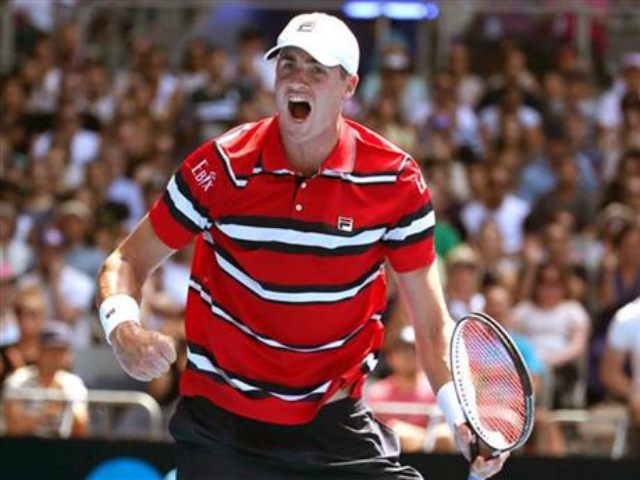It did not work out quite as hoped in the men’s draw at the Australian Open at Melbourne, with only John Isner, the tall Floridian with the big serve and huge improvements on the ground strokes, making it to early hours of the second week before succumbing in straight sets to the tenacious David Ferrer, the battler from Alicante on Spain’s Mediterranean coast.
Our side still has some men in the doubles draw, Nebraskan Jack Sock playing with his Canadian sidekick Vasek Popsipil and Coloradan Rajeev Ram with the South African doubles specialist Raven Klaasen, both into the quarters. And Bob Bryan, who with his brother lost to Ram-Klaasen in a spirited third round match, teams with Bethanie Mattek-Sands, the small but mighty Minnesota dynamo, in the mixed.
American men’s tennis, well, American men’s tennis. Seriously, the problem is not in our stars but in our bench. We have champs but no stellar players like Roger Federer and Andy Murray, both of whom are in magnificent form down there, or Rafa Nadal, who got bounced in the first round, and No. 1 Novak Djokovic, whom French ace Gilles Simon took to five exhausting sets on the weekend. It was a fantastic match, even on t.v., with lesson after magnificent lesson in the art of the set up. If you’ve got two baseline defensive men like the Serb ace and the tough-as-nails Frenchman, you take two, maybe three shots to get your opponent way over there, and then you put the ball away over here. But easier said then done, and it often does not work, so you start over and before you know the two of you have exchanged 26 shots. It’s a beautiful, lovely, friendly city and it’s just like conservative sports journalism to go stingy on travel budgets, but never mind.
The French demonstrate how important a deep bench is – and also how frustrating. The French always have deep benches, so they usually get at least one man to the quarters. This year in Oz, it will be Gael Monfils, the most acrobatic athlete the sport has seen since Boris Becker’s teen years. He hurt himself while executing one of his flying forehand pick-up shots on his way to the quarters, blew the second set with that stunt but recovered and beat Russia’s Andrey Kuznetzov in three.
The quarter between Serena Williams, who is the defending champion on the women’s side, and Maria Sharapova, who has not beaten her since 2004, may be dramatic, given how well the Florida immigrant from Siberia has been playing, worth watching on Tennis Channel or ESPN if you are baseball-deprived, but there will also be drama on the court where Johanna Konta meets Shuai Zhang, as both are making unexpected runs. Miss Konta, who is British, made it to the fourth round at Flushing Meadows last summer. The lady from Tianjin never made it past a first round in the singles draw of a Grand Slam tournament in six years of trying. However, she beat the talented young American Madison Keys (who hurt her thigh in the second set of their round of 16 match and lost the sure footwork that her fans admire), and she is showing hard work and patience pay.
No need to speculate, but Polish princess Agnieszka Radwanska may yet threaten the winner of Williams-Sharapova, with her deft shots and shrewd tactics as breathtaking as they were a few months ago when she triumphed in the WTA end of year tournament. If she does not make it to the final, Vika Azarenka has been playing flawless tennis and looks unstoppable, even with her mind on the Denver Broncos whom she supports. She comes from a flat country called Belarus, maybe that explains her attraction to the AFC champs from Colorado.

COMMENTS
Please let us know if you're having issues with commenting.